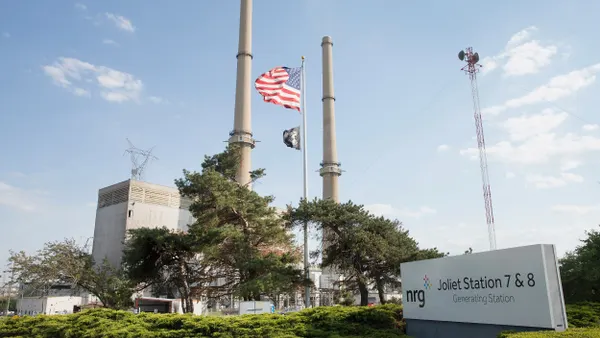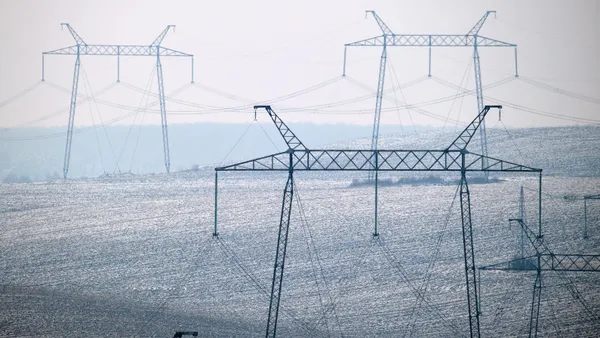Dive Brief:
-
The Federal Energy Regulatory Commission dismissed a complaint seeking to let energy users in the Midcontinent Independent System Operator’s footprint leave the system without making owed capacity payments.
-
The Coalition of MISO Transmission Customers, a group of industrial companies behind the complaint, failed to show that an unnamed industrial customer’s inability to exit MISO’s market without paying its share of capacity charges when there is a shortfall in MISO’s capacity auction makes the grid operator’s tariff unjust and unreasonable, FERC said in its Monday decision.
-
“The ability to hedge against high Auction prices and the various off-ramps from the Auction is further evidence that the existing Tariff provides opportunities to avoid potentially high prices in the Auction and is not unjust and unreasonable,” FERC said.
Dive Insight:
The coalition filed its complaint at FERC in May, about six weeks after capacity prices in MISO’s annual planning resource auction, or PRA, jumped to $236.66/MW-day from $5/MW-day a year ago across its central and northern footprint, driven by a supply shortfall. Load-serving entities must pay the PRA price if they fail to line up enough capacity to cover their requirements.
The group argued that MISO’s tariff was unjust and unreasonable because it contains no mechanism for load to exit the grid operator’s system without charge when that would help MISO address resource adequacy issues.
At least one coalition member, with roughly 200 MW of load, was considering cutting its operations through May 2023, according to the complaint. However, a significant factor in the company’s operational decisions is the requirement that it pay PRA charges, even if it shuts down facilities, the coalition said.
FERC rejected the group’s arguments.
“MISO’s capacity construct is designed to not only place capacity requirements on [load-serving entities] to promote resource adequacy in a given Planning Year, but also to produce price signals that promote long-term resource adequacy and economic efficiency by, when appropriate, creating incentives for existing resources to stay or new resources to enter the market,” FERC said. “We find that the absence of a Tariff provision allowing load to exit the system without charge following the Auction is by design.”
Also, letting auction participants shed a binding commitment after an auction would undermine the price signals that foster efficient planning and investment, FERC said.
If approved, the proposal would give an unfair advantage to entities that could reduce their electricity use after seeing an auction’s results compared with those that couldn’t, according to FERC.
In a concurrence, FERC Commissioner James Danly said it appeared MISO may not be keeping enough dispatchable power plants to ensure grid reliability.
“A market’s failure to procure sufficient capacity with the needed characteristics is a flaw so fundamental that it calls into question the justness and reasonableness of the resulting rates,” Danly said, noting that MISO’s interconnection queue consists mainly of intermittent renewable energy resources.
This year, MISO received 956 interconnection requests representing about 171 GW of new generation, including 164 GW of renewable or storage resources, the grid operator reported Sept. 27. At 84 GW, solar projects were the largest type of generators seeking to interconnect to MISO’s system this year, followed by hybrid projects at 34 GW, stand-alone storage projects at 32 GW and wind projects at 14 GW. MISO received 487 requests totaling 77 GW in last year’s interconnection application window.














